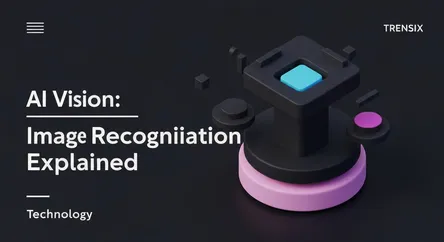Technology
AI Vision: Image Recognition Explained

Discover how image recognition, a key part of AI, enables machines to identify and understand objects, people, and places in visual data.
What is it?
Image recognition is a branch of artificial intelligence and computer vision that enables machines to identify and classify objects, people, places, and actions within digital images and videos. Using complex algorithms, particularly deep learning neural networks, the AI analyzes pixel data to find patterns and features. It then compares these findings to a vast database of labeled images to make a prediction about what it's "seeing,” essentially giving computers a sense of sight.
Why is it trending?
The technology is surging in popularity due to breakthroughs in deep learning, the availability of huge datasets for training models, and significant increases in computing power. This has made image recognition more accurate and accessible than ever. Its integration into everyday tech, from social media auto-tagging and smartphone cameras to self-driving cars and retail analytics, has fueled its rapid adoption and public awareness, making it a cornerstone of modern AI applications.
How does it affect people?
Image recognition directly impacts daily life by simplifying tasks like organizing photo libraries and enabling convenient features like unlocking phones with facial ID. It revolutionizes industries like healthcare by helping doctors detect diseases in scans and enhances security systems. However, its widespread use also raises critical concerns about personal privacy, the potential for mass surveillance, and the risk of algorithmic bias, prompting important ethical debates about its regulation and deployment.